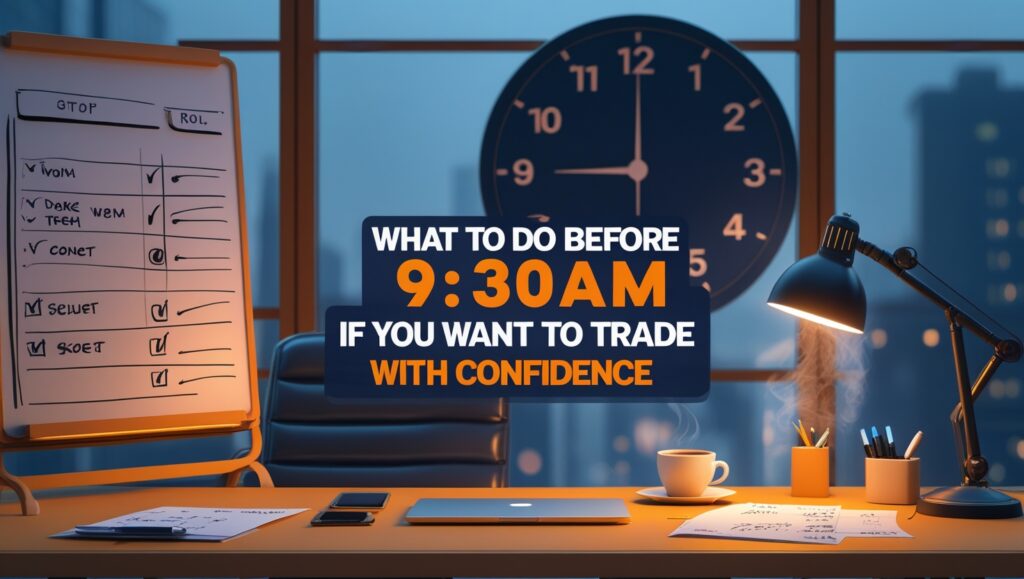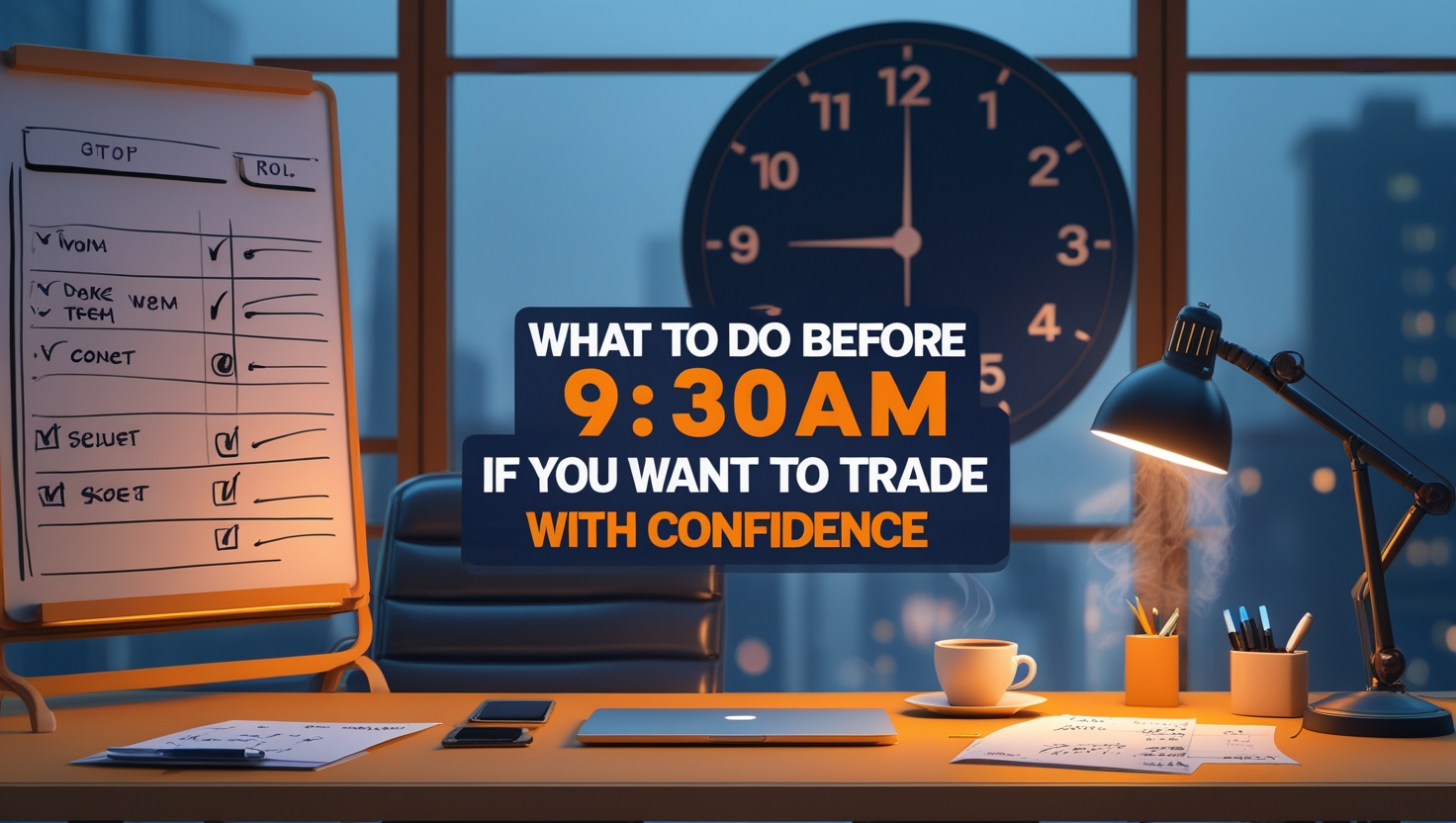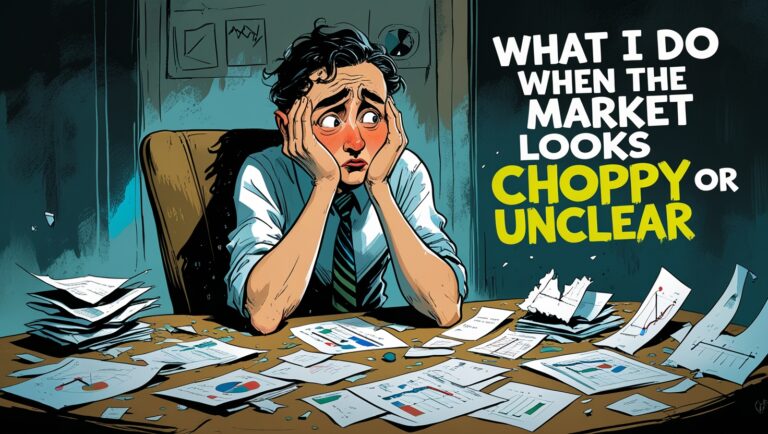What to Do Before 9:30AM If You Want to Trade With Confidence
What to Do Before 9:30AM If You Want to Trade With Confidence
If there’s one thing that completely changed my trading results, it’s this: what I do before 9:30AM matters more than what I do after.
I used to show up at the open and just react. No plan. No focus. I’d jump into random tickers I saw moving on Twitter or YouTube, and more often than not, I’d end up chasing, panicking, or cutting too late. It felt like gambling — because it was.
But everything shifted when I started building a pre-market routine. Now, before the bell rings, I already know which stocks I’m watching, where my key levels are, and what I’m waiting for. That preparation gives me confidence — and confidence leads to better trades.

Table of Contents
Start With a Scan for Volume and Gaps
The first thing I do before 9:30AM is scan for stocks with unusual volume or price gaps. These are the names that have the most potential to move once the market opens. I filter by volume, price range, and float size to narrow it down fast.
Most of the time, I’m only looking to build a watchlist of 4 to 6 stocks. I don’t want 20 tickers. That just creates noise and indecision. I want quality — names with momentum, a catalyst, and clean levels.
Draw Key Support and Resistance Levels
Once I’ve picked my stocks, I look at the daily chart and draw key support and resistance zones. I’m not talking about 50 indicators here — just basic price levels that show where the stock has bounced or rejected in the past.
This is how I create a map before the market opens. I already know where I want to enter, where I’ll exit, and where I’ll cut the trade if it goes against me. That structure gives me discipline.
Check the Catalyst and News
I never trade blindly. If something is gapping up, I want to know why. Earnings? FDA news? Analyst upgrade? Even if I’m only scalping, knowing the catalyst helps me gauge if the move is legit or just fluff.
This step also helps me avoid random pump-and-dump plays that have no real backing. If the stock has volume and a real reason to move, I keep it on the list.
Plan Your Risk — Before You Even Trade
Before the bell rings, I already know how much I’m willing to lose on each trade. This keeps me from getting emotional or revenge trading later. I use a simple fixed-dollar risk per trade based on my account size, and I stick to it.
This is how I protect my capital — and my confidence. No trade should be big enough to ruin your day. That mindset will keep you in the game long enough to actually get good.
Know What NOT to Trade
This one took me years to learn. Just because a stock is moving doesn’t mean I need to be in it. If the chart looks messy, if there’s no clear trend, or if it’s moving too erratically — I skip it. There’s always another setup.
I’d rather take one clean trade than three random ones. That’s what helps me stay consistent, especially when I’m trading with a small account.
Stick to the Watchlist
By the time 9:30AM hits, I already know my 4–6 stocks. I’m not jumping from ticker to ticker, chasing alerts or reacting to hype. I stay focused on the plan I built in pre-market. That’s where real confidence comes from — not from luck, but from preparation.
My Full Routine Is Inside My Ebook
If you want to see exactly how I prep for the market — how I scan, filter, draw levels, and decide which trades are worth taking — I break it all down inside my ebook.
This is the same approach that helped me go from losing trades to paying my bills with stocks every single month. No indicators. No alerts. Just clean setups and a plan I trust.
A mistake I used to make was starting too late. I’d wake up around 9AM, scroll social media, and try to catch up on what was moving. But by the time I had a plan, the opportunity was already gone — or worse, I’d enter blindly. Now, I start earlier and I treat this like a job.
Routine builds confidence. Just like an athlete warms up before the game, I treat my pre-market like my warm-up. I’m not here to gamble. I’m here to execute a plan I already thought through with a clear mind. That’s what helps me avoid emotional trades.
When I’m building my watchlist, I focus on quality over quantity. I’m not impressed by every stock that moves. I ask myself: Does this chart have a clean breakout level? Is the volume real? Do I understand the risk? If it doesn’t check those boxes, I skip it.
Another thing that helps me is reviewing yesterday’s performance. Did I follow my rules? Did I size too big? Did I cut too soon or hold too long? A quick journal entry before the open keeps me honest and helps me grow as a trader.
If you’re just starting out, you don’t need 10 different tools. What you need is a repeatable system. My system is simple: I scan for momentum, filter for clean charts, draw my levels, plan my risk, and wait for the trade to come to me.
I talk about all of this inside my ebook. It’s not theory — it’s what I personally do every week to pick my stocks and stay consistent. If you’re tired of overcomplicating things, it will help you simplify and stay focused.
Discipline starts before the bell. That’s why I don’t make decisions on the fly. I trust my prep. I don’t need alerts or signals. I don’t care what someone else is watching. I stick to my watchlist and wait for the chart to prove itself.
There’s a myth that you need to trade all day to make money. That’s not true. I only need one or two clean setups a week to pay my bills. The key is knowing where the opportunity is before 9:30AM, not chasing it after it’s already gone.
One trick I use is writing down my top 2 trade ideas before the open. That way, even if I get distracted or nervous, I have something to anchor me. It keeps me from forcing trades when the market is choppy.
Emotions kill confidence. But preparation quiets those emotions. When I do the work before the open, I’m not scared when it’s time to pull the trigger. I already know what I’m looking for. That’s what separates a guessing trader from a confident one.
The longer I trade, the more I value simplicity. I don’t want 20 indicators or five opinions. I want a plan, a chart, and a strategy that works. And that’s what I give you inside my ebook — the same strategy I use to make real money with real consistency.
If you’re reading this and still struggling to find your rhythm, I’ve been there. I built this routine from experience, trial, and failure. Now it’s yours if you want it. The earlier you learn how to prepare before 9:30AM, the faster you’ll grow into a confident trader.

Stay ahead in the stock market! Subscribe to our newsletter and receive exclusive stock flow reports, trading insights, and actionable tips directly in your inbox. Join thousands of traders who get our updates first.







